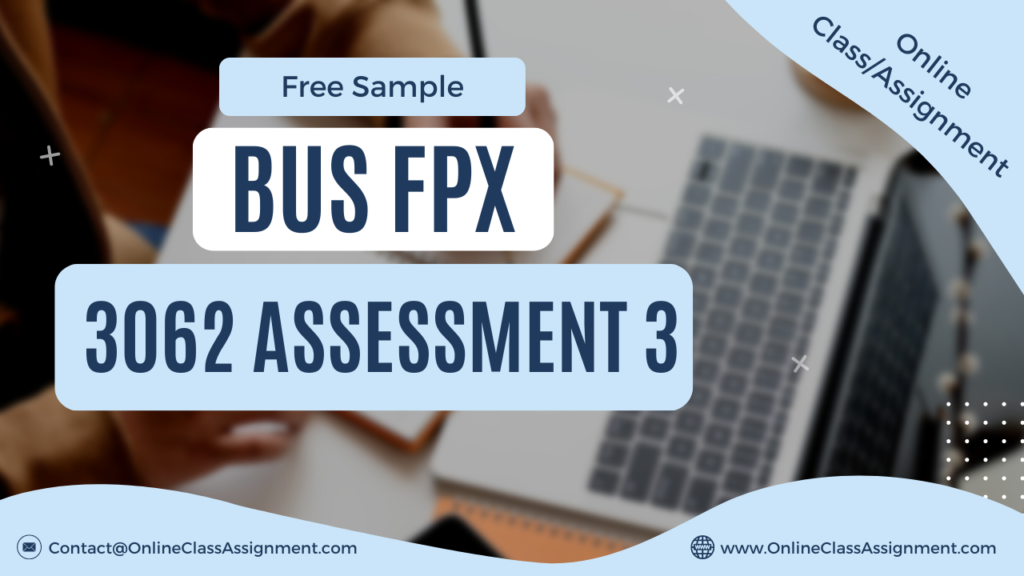
BUS FPX 3062 Assessment 3 Bond Valuation
Student Name
Capella University
BUS-FPX3062 Fundamentals of Finance
Prof. Name
Date
Cash Flow in Corporate Finance
Cash flow pertains to the income or funds utilized for paying bills within a business. In a broader context, it encompasses the net income of the business along with noncash expenses like depreciation, depletion, amortization, and extraordinary additions to reserves (Sherman, 2011). When a company seeks a loan, its estimated future cash flow assists the bank or investor in determining whether the company can meet interest and repayment obligations, thus influencing the loan approval decision. Companies often project unrealistic cash flows to demonstrate their ability to make necessary payments, as positive cash flow is crucial for meeting debts, reinvestment, shareholder returns, and expenses, while also providing a cushion for future downturns. However, cash flow can be misleading, and hence, financial analysts emphasize free cash flow, which deducts expenses and dividends from cash flow, representing the available funds after bill payments (Staff, n.d.).
Relationship between Present Value and Future Values
Present value and future value are both indicators of an investment’s worth. Present value signifies the current cost of an investment, whereas future value denotes the returns upon maturity. Investors require knowledge of both values to evaluate investment attractiveness. For an investment to be deemed attractive, the future value should exceed the present value plus the investor’s required rate of return. Calculation of present and future values involves knowing three out of the four variables, including present value, future value, term, and rate of return, enabling investors to analyze investments comprehensively (Sherman, 2011).
Impact of Interest Rate Changes on Present Values
Higher interest rates correspond to lower present values. The present value of an investment that will yield $1000 in three years depends on the prevailing interest rate. For instance, if the annual interest rate is 10%, an investment yielding $1000 in three years would necessitate an investment of $751 today. Conversely, at a 20% interest rate, only $579 would be required today, and at a 30% interest rate, merely $455 would be necessary (Weaver & Weston, 2001).
Equations
If you deposited $250 in your savings account today, and the bank pays 4 percent interest per year, how much would you have in your savings account after 9 years?
[FV = 250(1 + 0.04)^9]
[FV = 250(1.423)]
[FV = \$355.83]
Recalculate the account balance using a 6 percent interest rate and a 7 percent interest rate.
6 Percent:
[FV = 250(1 + 0.06)^9]
[FV = 250(1.689)]
[FV = \$422.37]
7 Percent:
[FV = 250(1 + 0.07)^9]
[FV = 250(1.838)]
[FV = \$459.61]
BUS FPX 3062 Assessment 3 Bond Valuation
A $450 deposit earns 6 percent interest in the first year, 3 percent interest in the second year, and 7 percent interest in the third year. What is the future value at the end of the third year?
[FV_3 = 450[(1 + 0.06)(1 + 0.03)(1 + 0.07)]]
[FV_3 = 450(1.168)]
[FV_3 = \$525.70]
What is the annual rate of return for an $8,000 investment if in five years it grows to $12,500?
[12500 = 8000(1 + r)^5]
[1.5625 = (1 + r)^5]
[r = 0.09336] or 9.336%
Assuming the growth occurred in six years and then eight years, recalculate the rate of return for these two scenarios.
6 Years:
[12500 = 8000(1 + r)^6]
[1.5625 = (1 + r)^6]
[r = 0.07722] or 7.722%
8 Years:
[12500 = 8000(1 + r)^8]
[1.5625 = (1 + r)^8]
[r = 0.05737] or 5.737%
References
Sherman, E. H. (2011). Finance and Accounting for NonFinancial Managers (3rd ed.). AMACOM. Retrieved June 26, 2018, from https://ebookcentral-proquestcom.library.capella.edu/lib/capella/detail.action?docID=951798
Staff. (n.d.). Cash Flow. Retrieved July 24, 2018, from Investopedia: https://www.investopedia.com/terms/c/cashflow.asp
Weaver, S. C., & Weston, J. F. (2001). Finance & Accounting for Non-Financial Managers. McGraw-Hill Professional Publishing. Retrieved June 26, 2018, from https://ebookcentral-proquest-com.library.capella.edu/lib/capella/detail.action?docID=4654730
BUS FPX 3062 Assessment 3 Bond Valuation
Get Capella University Free Business Samples
BUS FPX 3007
BUS FPX 3011
BUS FPX 3021
BUS FPX 3022
BUS FPX 3030
BUS FPX 3040
BUS FPX 3050
BUS FPX 4012
